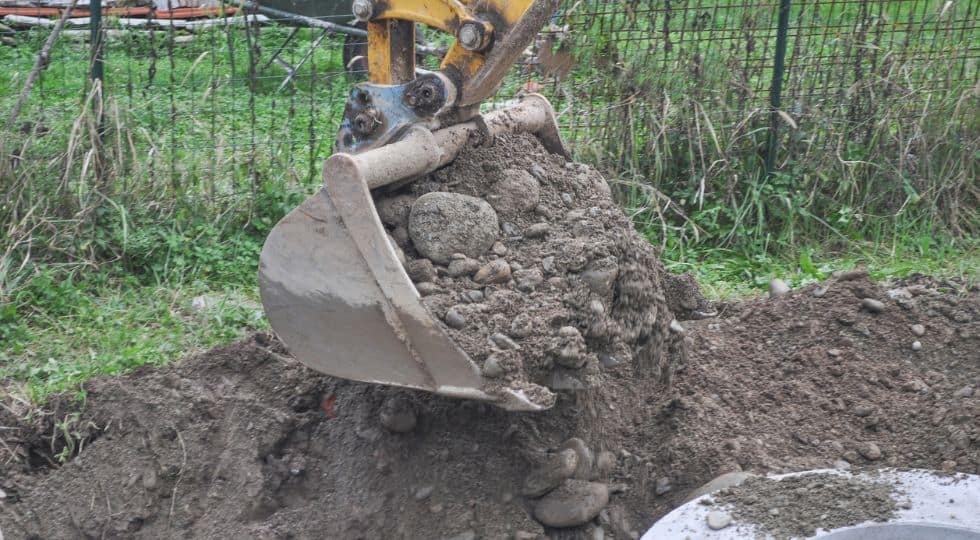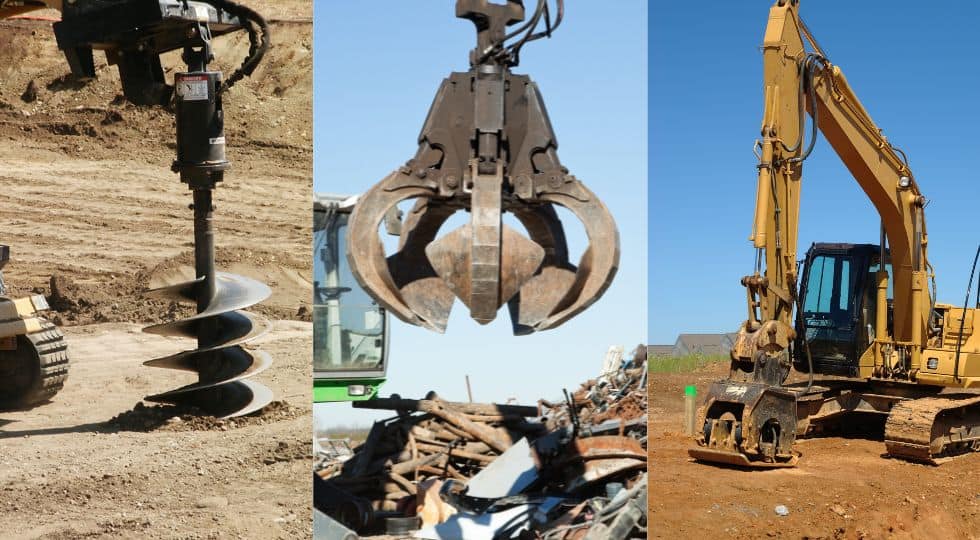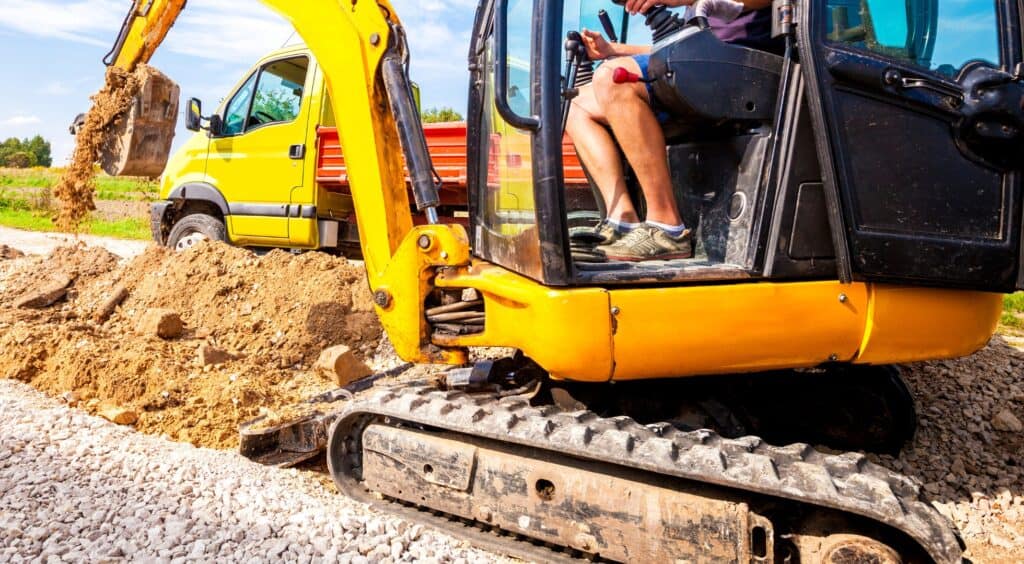Mini excavators are primarily designed for digging, but due to their exceptional engineering, they can also be used as lightweight cranes or material handlers on construction sites. This versatile capability of mini excavators can significantly benefit contractors in terms of time and cost savings. However, lifting heavy objects with a mini excavator requires contractors and operators to comprehensively understand the machine’s specifications. But you need to know How much weight will a mini excavator Lifts? The best practices for safe and efficient operation. Using mini excavators for lifting purposes should be carried out with utmost caution to minimize the risk of accidents and prevent unnecessary wear and tear on the equipment.
Today, the scope of lifting operations using mini excavators has expanded significantly. A mini excavator on a construction site can lift virtually any item that a lightweight crane can lift. To ensure workers’ safety and maximize the equipment’s performance, it is essential to adhere to the manufacturer’s recommendations and guidelines for lifting operations using mini excavators. It includes ensuring that the load being lifted is within the machine’s rated lift capacity and maintaining proper positioning and balance of the excavator during the lift operation.
How much weight will a mini excavator Lift?
A mini excavator’s lift capacity varies depending on the make and model of the machine, as well as other factors such as the boom length, arm length, and angle of the boom. The lift capacity of a mini excavator is typically measured in pounds or kilograms.

Mini excavators can lift anywhere from a few hundred to several thousand pounds, depending on their size and specifications. For example, smaller mini excavators may have a lift capacity of around 1,000 to 2,000 pounds, while larger models may lift 10,000 or more.
It’s important to always consult the manufacturer’s specifications and guidelines before operating any mini excavator to ensure you stay within its rated lift capacity.
Mini Excavator Lift Capacity Chart
Compact excavators come in various sizes and have different lift capacities. The lift capacity refers to the maximum weight the excavator can lift and move safely. Here is a chart that shows the lift capacity of some standard mini excavators:
| Mini Excavator Model | Lift Capacity (in pounds) |
| Bobcat E32 | 3,695 |
| Caterpillar 303.5E CR | 7,782 |
| John Deere 35G | 7,993 |
| Takeuchi TB235-2 | 7,940 |
| Kubota KX033-4 | 7,055 |
The lift capacity can vary depending on the boom length, arm length, and boom angle. Therefore, it’s always best to consult the manufacturer’s specifications and guidelines before operating any excavator. It is essential to ensure that the load being lifted is within the rated lift capacity of the excavator to ensure safe operation.
Raise Your Game with Attachments.
“Raise your game with attachments” is a phrase commonly used in the construction industry to emphasize the importance of using attachments to enhance the versatility and functionality of heavy types of machinery such as excavators, loaders, and bulldozers.

Attachments such as buckets, hammers, grapples, augers, and compactors can significantly increase the capabilities of construction equipment, enabling contractors to take on a wider range of tasks and complete jobs more efficiently as you can use hydraulic breaker attachment with an excavator to break concrete. In contrast, you can grapple attachment to lift and move heavy materials.
Attachments can also provide significant cost savings by reducing the need to purchase additional equipment and enabling workers to complete tasks more quickly and precisely. Moreover, attachments can help improve safety on construction sites by minimizing the need for manual labor and reducing the risk of accidents.

Some common attachment styles include lifting hooks, couplers, grapples, and thumbs. Lifting hooks and eyes are low-tech options that can be used with slings, cables, and chains, while couplers and grapples are more versatile and can perform a wide range of tasks. Thumbs are particularly helpful in providing greater control over the position of objects being lifted.
Hydraulic thumbs are a popular choice due to their versatility and precision. These thumbs connect to the machine at the base of the arm and feature hydraulic controls that allow for precise positioning and management of the thumb, which can have multiple tines or be capable of rotation.
Grapples are available in various styles, including clamps, three-tine grapples, and clearing grapples. Specialized variants are also available for larger excavators, such as those used in logging, waste management, and pipe handling. Rotating coupler attachments and safety quick-coupler systems are also gaining popularity, allowing for enhanced use of grapples and other lifting attachments.
Another high-tech alternative to traditional lifting methods is vacuum lift attachments, such as those offered by Vacuworx. These attachments use vacuum suction to pick up items with consistent, smooth surfaces, such as pipes and concrete slabs, providing a quick and efficient lifting solution.
Details Matter
When it comes to construction projects, details matter. The success of any project depends on careful planning, attention to detail, and the ability to execute tasks with precision.
Minor oversights or mistakes can have significant consequences, leading to delays, safety hazards, and costly rework. Therefore, it is essential to thoroughly understand the project requirements and develop a detailed plan that considers all the variables and potential challenges.

Communication and collaboration are critical for ensuring that everyone involved in the project is on the same page and working towards the same goals. It includes other stakeholders such as architects, engineers, and clients.
Additionally, if the machine has a dozer blade or different boom and arm options, using the correct chart for your configuration is essential.
To ensure safety and compliance, you must know the total load weight, including the bucket, coupler, thumb, and any other attachments you may use. Ensure that the total weight does not exceed the manufacturer’s lifting chart for the operating range you will be lifting or swinging the load. The weight should not exceed any point on the lift chart.
Two Factors for Limit Lifting Capacity
Two primary factors limit the lifting capacity of a mini excavator: hydraulic ability and tipping load.

- The hydraulic capacity refers to the maximum amount of force that the hydraulic system of the mini excavator can generate. This force is used to lift and move heavy loads. If the load being lifted exceeds the hydraulic capacity of the machine, the lift may not be successful or could damage the hydraulic system of the mini excavator.
- Tipping load, on the other hand, refers to the maximum amount of weight that can be lifted while maintaining stability. The weight of the load being lifted, the weight of the mini excavator, and any attachments being used. If the tipping load is exceeded, the mini excavator can become unstable and potentially tip over, leading to a dangerous situation.
Therefore, consider both hydraulic capacity and tipping load when determining the lifting capacity of a mini excavator. Exceeding either of these limits can have serious consequences, including damage to the machine, injury to personnel, and even loss of life.
How to Calculate Lifting Capacity
Find your excavator’s configuration.
To determine the lifting capacity of your mini excavator, you first need to identify its configuration. It includes the boom, arm, bucket type used, and other attachments, such as a coupler or thumb.
Once you have identified the configuration of your mini excavator, you can refer to the manufacturer’s lifting chart for that specific configuration. The lifting chart provides information on the maximum weight that can be safely lifted at various points in the working range of the machine.
Suppose your mini excavator’s configuration needs to be listed on the lifting chart. In that case, you will need to calculate the weight of the bucket and any other attachments being used and add it to the importance of the load to determine the total weight being lifted. Refer to the lifting chart for the closest configuration and adjust the lifting capacity accordingly.
Determine the lift point height.
Once you have identified the configuration of your mini excavator and the maximum weight it can safely lift according to the lifting chart, the next step is to determine the lift point height.
The lift point height refers to the vertical distance between the lifting point (usually the hook or attachment point) and the ground or other surface from which the load is lifted. The lift point height ensures that the lifting capacity of the mini excavator is not exceeded.
To determine the lift point height, you can use a measuring tape or laser level to measure the distance between the lifting point and the ground or other surfaces. Consider any obstacles or uneven terrain that may affect the height.
Find the lifting radius.
Another critical factor to consider when lifting with a mini excavator is the lifting radius. The lifting radius refers to the horizontal distance between the load’s center and the center of rotation of the excavator’s boom.
Once you have determined the lifting radius, you can refer to the lifting chart for your mini excavator’s configuration to ensure that the weight of the lift does not exceed the maximum lifting capacity at that radius. Suppose the weight of the load exceeds the maximum lifting capacity at that radius. You must adjust the lift point or lifting radius to ensure safe lifting operations.
Calculate your lifting capacity.
To calculate the lifting capacity of your mini excavator, you must consider several factors, including the excavator’s configuration, lift point height, lifting radius, and the weight of the load being lifted.
First, refer to the lifting chart for your mini excavator’s configuration to determine the maximum lifting capacity at various lifting radii and lift point heights.
Next, determine the weight of the lifted load, including any attachments such as buckets, couplers, thumbs, etc.
Then, adjust the lifting radius and lift point height as necessary to ensure that the weight of the lift does not exceed the maximum lifting capacity at that radius and height, as outlined in the lifting chart.
Conclusion
It is essential to always ensure that the weight of the load lifted is, at most, the maximum lifting capacity of the mini excavator. Overloading the excavator can damage the machine or even lead to dangerous accidents. So always consult the manufacturer-size cart. If you need any further information, you can contact us.

